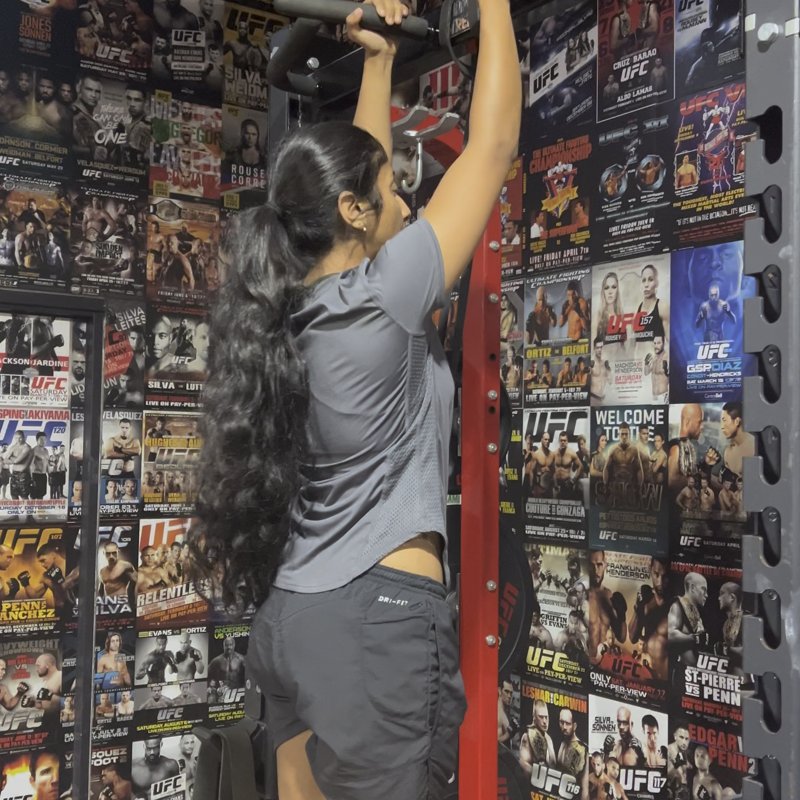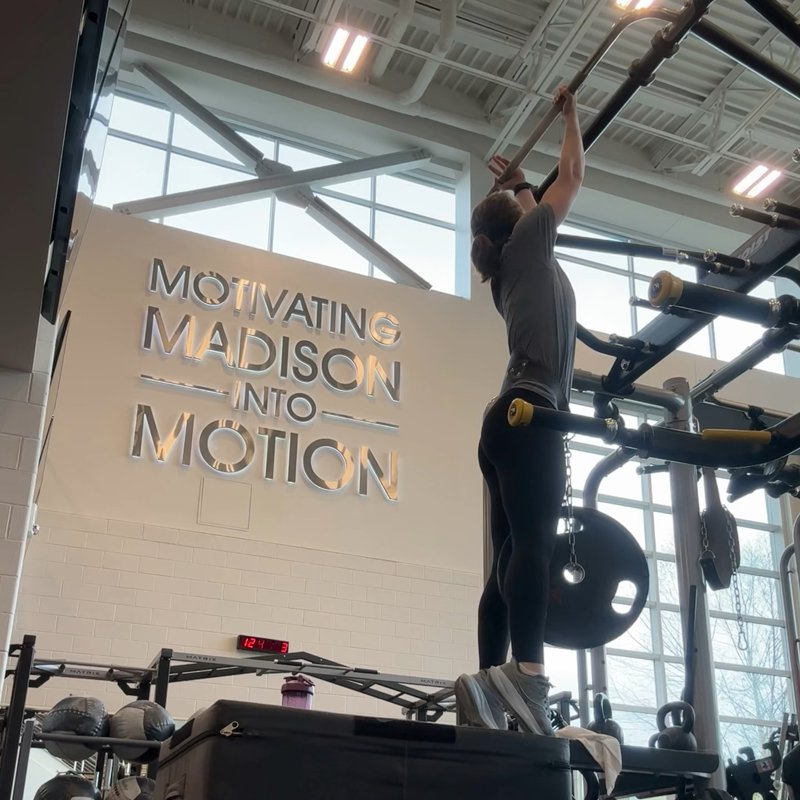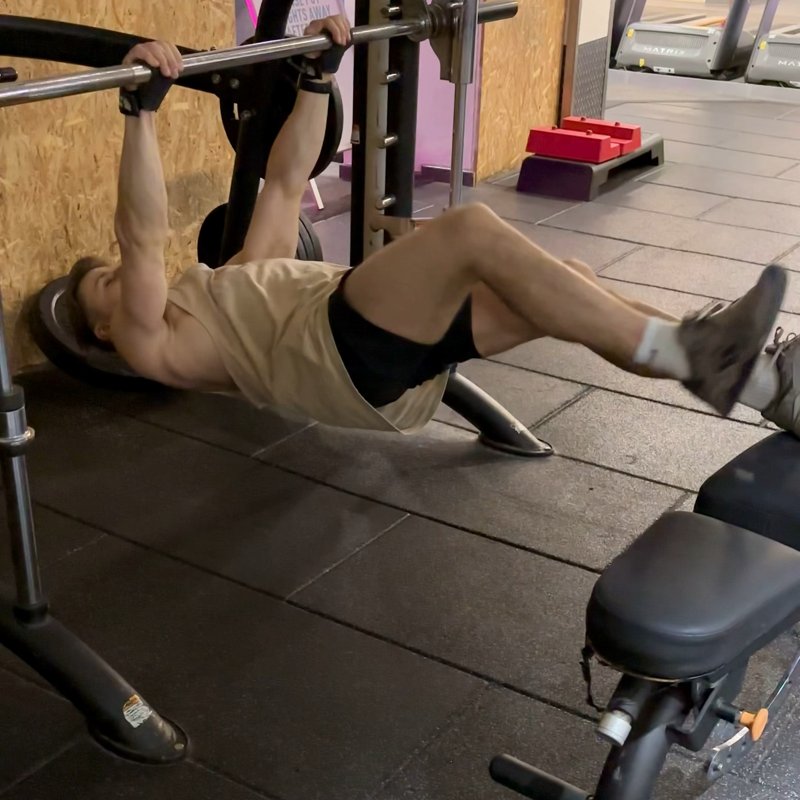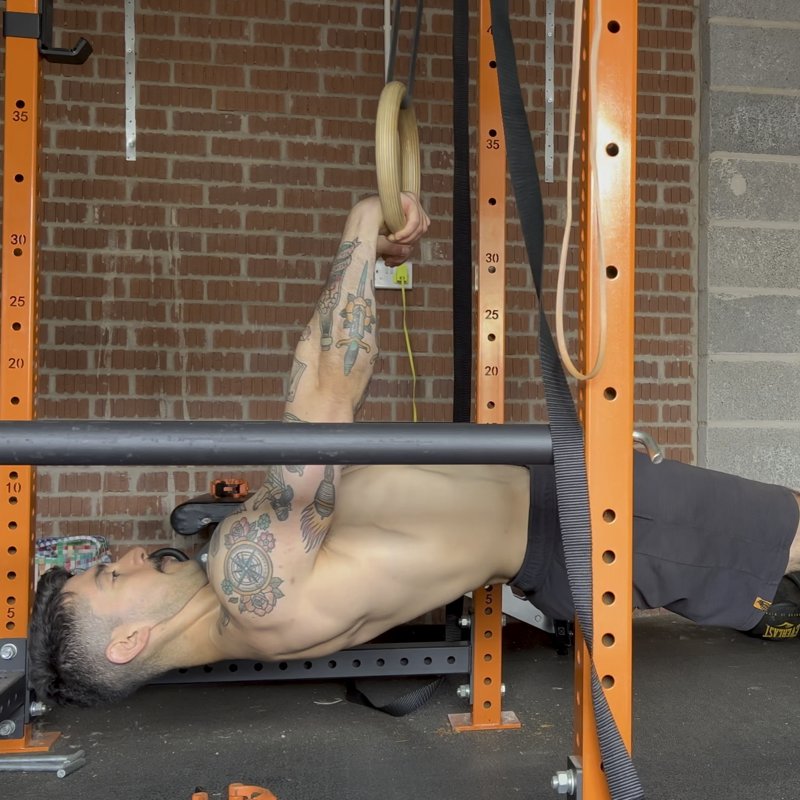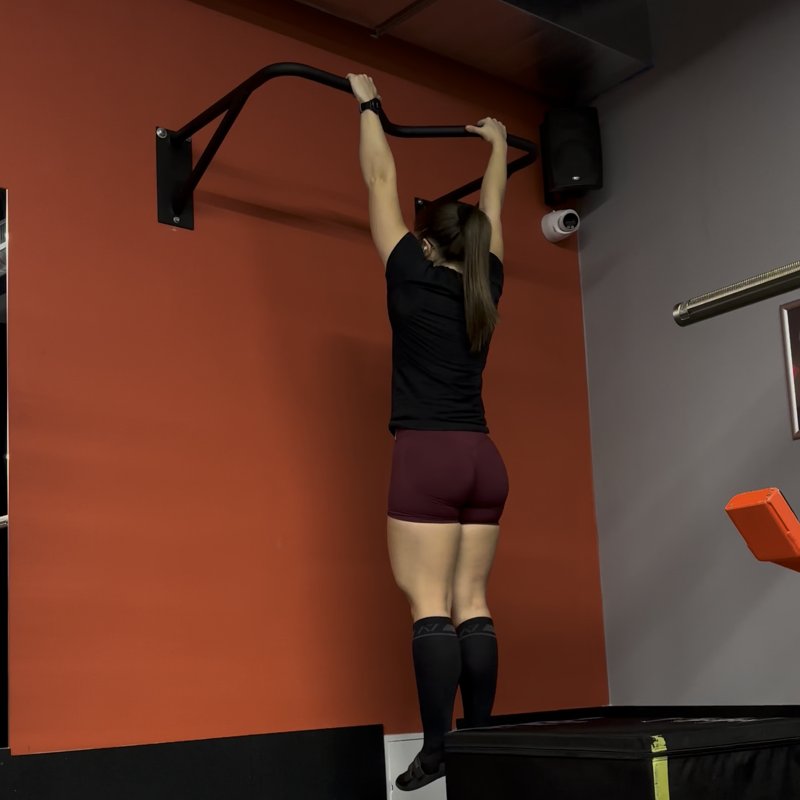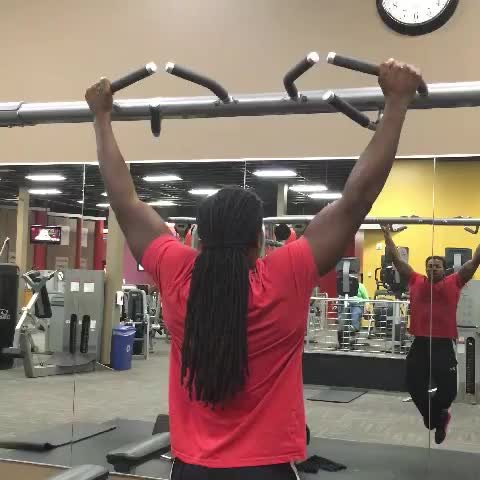Chinup: The Ultimate Guide
A compound bodyweight exercise that strengthens your back, biceps, and core by pulling your body up until your chin is above the bar using an underhand grip.
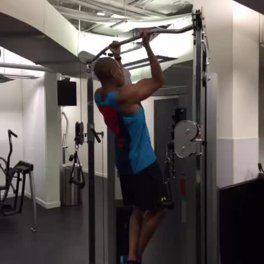
Quick Facts
Key Benefit
Builds upper body pulling strength and bicep development
Primary Muscles
Biceps, Brachialis, Lats
Secondary Muscles
Abdominals, Forearms, Posterior Deltoids, Rhomboids, Traps
Equipment
Pull-up Bar, Resistance Band (optional)
Difficulty
Intermediate
Type
Strength
In This Guide
Ready to master the Chinup?
Track your progress, see improvements over time, and build strength consistently.
Download GravitusThe chinup is one of the most effective upper body exercises you can perform. Unlike its cousin the pull-up (which uses an overhand grip), the chinup employs an underhand grip that increases bicep activation while still thoroughly working the back muscles.
This bodyweight movement builds functional strength that transfers to everyday activities and athletic performance. It tests your strength-to-weight ratio and serves as an excellent benchmark for upper body development.
While chinups are challenging for beginners, they offer scalable progression paths for all fitness levels. With proper technique and consistent practice, most people can develop the strength to perform their first unassisted chinup and then progress to multiple repetitions.
Benefits of the Chinup
The chinup is a cornerstone exercise for developing upper body strength and offers numerous advantages over machine alternatives.
Complete Upper Body Development
Chinups engage multiple muscle groups simultaneously, including the latissimus dorsi, biceps, forearms, shoulders, and core, making them an extremely efficient exercise for building upper body strength.
Functional Strength
The pulling motion of chinups mimics movements used in everyday life and various sports, helping you develop practical strength that transfers to real-world activities.
Minimal Equipment Required
All you need is a sturdy bar to perform chinups, making them accessible for home workouts or when traveling with limited equipment.
Scalable Difficulty
From assisted variations to weighted advanced versions, chinups can be modified to challenge all fitness levels, ensuring continuous progress regardless of your starting point.
Proper Form & Technique
Starting Position
- Grasp the pull-up bar with an underhand grip (palms facing toward you), hands positioned at approximately shoulder width apart.
- Hang with arms fully extended, shoulders engaged (pulled down away from your ears), and core braced.
- Cross your ankles behind you or keep your legs straight with a slight forward angle to prevent swinging.
- Look straight ahead or slightly upward toward the bar, maintaining a neutral neck position.
Movement
- Initiate the movement by pulling your shoulder blades down and back (scapular retraction).
- Pull yourself upward by driving your elbows down toward your ribs, focusing on using your back and biceps.
- Exhale as you pull, maintaining tension throughout your upper body.
- Continue pulling until your chin clears the height of the bar, or ideally until your upper chest approaches the bar.
Lowering Phase
- Lower yourself in a controlled manner, resisting the pull of gravity rather than simply dropping.
- Maintain tension in your back and arms throughout the descent.
- Extend your arms fully at the bottom position without allowing your shoulders to rise toward your ears.
- Inhale during the lowering phase and prepare for the next repetition.
Key Form Tips
Grip
Keep your wrists neutral (not excessively flexed or extended) to prevent strain.
Core Engagement
Maintain a braced core to prevent excessive swinging or arching of the lower back.
Elbow Path
Focus on driving your elbows down and back rather than just pulling with your arms.
Breathing
Exhale during the pulling phase and inhale during the lowering phase.
Range of Motion
Aim for a full range of motion with complete arm extension at the bottom and chin above the bar at the top.
Muscles Worked
Primary Muscles
- lats: The lats are the primary movers in the chinup, responsible for the downward and backward pulling movement of the arms.
- biceps: The underhand grip significantly engages the biceps, making the chinup an excellent bicep builder.
- Brachialis: This muscle lies beneath the biceps and assists in elbow flexion during the pulling phase.
Secondary Muscles
- Rhomboids: These muscles between the shoulder blades assist in scapular retraction during the initial pull.
- traps: Helps stabilize the shoulder blades throughout the movement.
- forearms: The grip demands of chinups strengthen the muscles of the forearms.
- abdominals: The abdominals and obliques work to stabilize your body and prevent swinging during the exercise.
- posterior deltoids: The rear shoulder muscles assist in the pulling movement and shoulder stability.
Common Mistakes and How to Fix Them
Incomplete Range of Motion
Many people don't fully extend their arms at the bottom or fail to get their chin above the bar. Focus on achieving a complete range of motion to maximize muscle development and strength gains.
Excessive Body Swinging
Swinging generates momentum that makes the exercise easier but reduces muscle activation. Keep your core tight and legs still to maintain strict form.
Shortened Range at Bottom
Not fully extending the arms at the bottom of the movement reduces effectiveness. Allow your arms to straighten completely while maintaining active shoulders (don't just hang passively).
Rising Shoulders
Letting your shoulders rise toward your ears (shrugging) during the hang can strain your neck and reduce lat engagement. Keep your shoulders "packed" down and away from your ears throughout the movement.
Using Only Arm Strength
Relying too heavily on biceps without engaging the back muscles limits the exercise's benefits. Focus on initiating the pull by driving your elbows down and back, which will better activate your lats.
Exercise Variations
Beginner Variations
-
Band Assisted Chin Up
Loop a resistance band around the bar and place one foot or knee in it for assistance. The band provides upward force, reducing the effective weight you need to lift.
-
Negative Chinups
Use a box or jump to get to the top position, then lower yourself as slowly as possible. This builds the strength needed for full chinups.
-
Inverted Rows
Perform rowing movements with your body at an angle using a bar set at waist or chest height. The more horizontal your body, the easier the exercise.
Advanced Variations
-
Weighted Chinup
Add additional resistance using a weight belt, weighted vest, or by holding a dumbbell between your feet.
-

Tempo Chinups
Slow down specific phases of the movement (e.g., 3-second pull, 1-second hold, 5-second lower) to increase time under tension.
-

L-Sit Chinup
Perform chinups while holding your legs out in front of you at a 90-degree angle to your torso, engaging your core intensely.
-

One-Arm Chinup Progression
Work toward a one-arm chinup by gradually reducing assistance from your second hand, using towels or rings for partial support.
Frequently Asked Questions
The primary difference is grip orientation. Chinups use an underhand (supinated) grip with palms facing toward you, while pullups use an overhand (pronated) grip with palms facing away. Chinups typically engage the biceps more significantly, making them slightly easier for most beginners, while pullups place greater emphasis on the lats and are generally more challenging.
For optimal progress, train chinups 2-3 times per week with at least one day of rest between sessions to allow for muscle recovery. Beginners might start with twice weekly, while more advanced lifters might perform them up to three times per week as part of a structured program. Always listen to your body and avoid training through joint pain.
This varies widely based on individual factors including body composition, training history, and gender. As a general benchmark, an average untrained male might be able to perform 1-3 chinups, while an average untrained female might struggle with unassisted chinups initially. With consistent training, most healthy individuals can work up to 8-12 repetitions, while advanced trainees might perform 15-20 or more.
Start with prerequisite exercises to build the necessary strength. Focus on negative chinups (jumping to the top position and lowering slowly), assisted chinups using bands or machines, inverted rows, and targeted strengthening of the lats and biceps. Consistency with these progressions will eventually lead to your first unassisted chinup.
Chinups can be shoulder-friendly when performed with proper form, especially compared to pullups, as the supinated grip allows for more natural shoulder rotation. However, those with existing shoulder injuries should proceed with caution. Key safety points include maintaining packed shoulders (away from ears), avoiding excessive range of motion if it causes pain, and ensuring controlled movement throughout the exercise.
Video Demonstrations
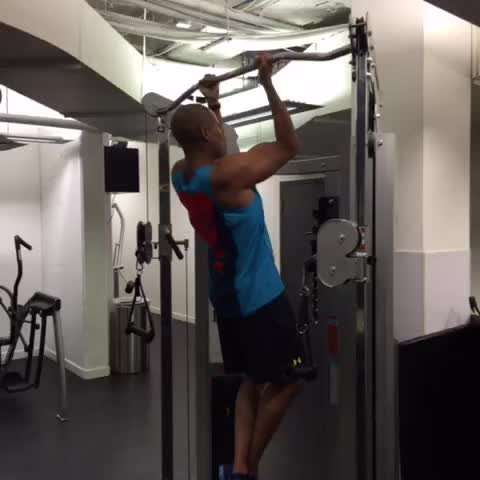
Log in to watch video demonstrations
Login to Watch3 video demonstrations available
Find more video demonstrations in the Gravitus app
Tips from the Community
-

A shoulder width grip lets you drive your elbows all the way back.
-

Pull your chest all the way to the bar and squeeze your shoulder blades together.
-

Keep your glutes, abs and legs tight and flexed
Track your progress with Gravitus
Download Gravitus to log your workouts, track your progress, and join a community of fitness enthusiasts.

Helpful Resources
One Rep Max Calculator
Find your one rep max for any exercise without maximal testing. Essential for developing effective strength training programs.
Calculate 1RMWorkout Programs
Follow structured workout programs created by fitness professionals to maximize your strength and muscle gains.
View Programs